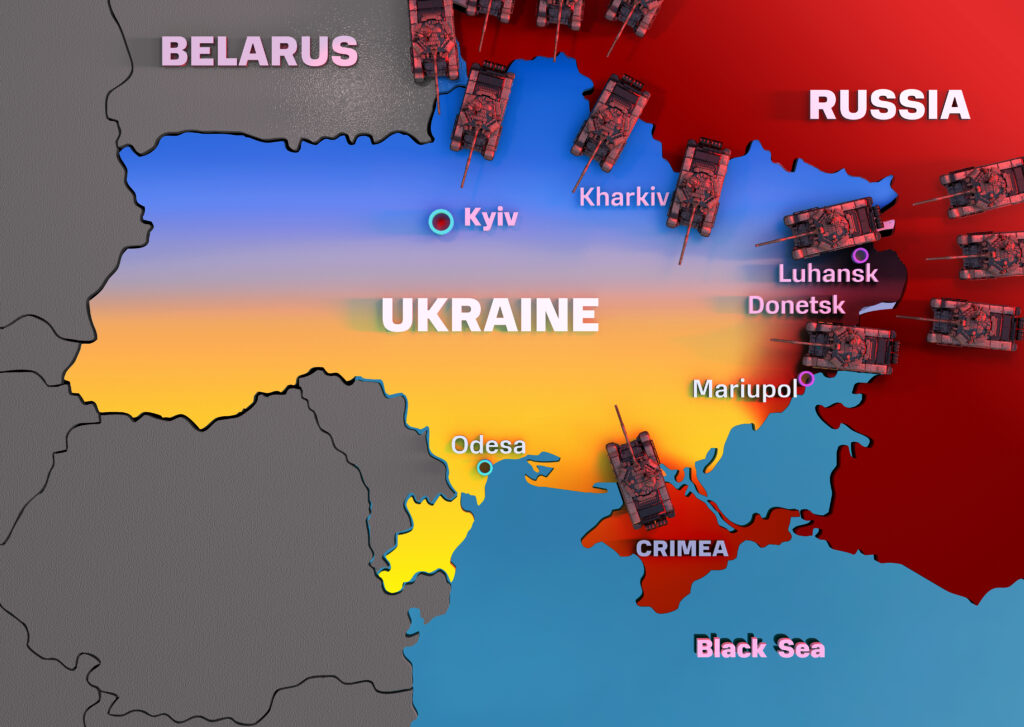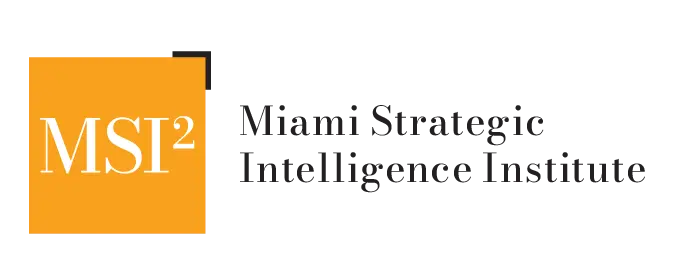10 Jun Russia Intensifies Its Offensive in Ukraine: A Pre-Winter Strategy?
By,
Jesús Romero. Co-Founder & Senior Fellow, MSI²
As June progresses, the conflict between Russia and Ukraine is clearly escalating, aligning with earlier forecasts that no agreement would be reached before August and that Moscow would adopt a more aggressive strategy ahead of the winter months.
No Substantial Progress in Negotiations
Peace talks mediated by Turkey have yielded few concrete results. The only notable development so far has been a prisoner exchange, with 1,000 soldiers released by each side (Infobae, 2025).
While diplomatic dialogue remains open, there is still no mutually acceptable framework. Positions remain rigid: Ukraine demands the full withdrawal of Russian troops and the complete restoration of its sovereignty, while Moscow insists on the recognition of its annexations and the cessation of Western military aid (Cadena SER, 2025).
Given these circumstances, it seems unrealistic to expect a settlement before winter. Vladimir Putin cannot accept any outcome that does not, in essence, involve Ukraine’s subjugation. And while communication continues, no viable compromise is currently in sight.
Russian Military Escalation
On June 6, Russia launched its largest bombardment of Ukraine since the war began, firing over 400 drones and 45 missiles in retaliation for Ukrainian strikes inside Russian territory (El País, 2025). Additionally, satellite imagery revealed a significant buildup of Russian strategic bombers at the Olenya air base in the Arctic, reinforcing signs that Moscow is preparing for larger-scale offensives (HuffPost, 2025).
Strategic Objectives Before Winter
According to Ukrainian intelligence, Moscow aims to complete the full occupation of Donetsk and Luhansk regions before September (Infobae, 2025). The Kremlin appears intent on consolidating new territorial realities before winter conditions impede ground operations.

NATO Hardens Its Stance
In response to the escalation, NATO has adopted a more assertive tone. Recent statements warn of “proportional responses” if Russia crosses specific red lines. Allied leaders stressed that they would not allow Ukraine to be forced into surrender through attrition. The United States, under the administration of President Donald J. Trump, has reaffirmed its commitment to a peace based on national sovereignty, without supporting an endless war.
What Role Will the European Union Play?
The European Union finds itself in a delicate position: a major financier of Ukraine’s resistance but also under domestic pressure due to the war’s economic, political, and energy costs. Its role may be defined across four principal axes:
1. Sustaining Economic Pressure
The EU has been central in upholding sanctions against Russia, blocking access to financial markets, restricting tech exports, and reducing energy dependency. However, countries like Hungary and Slovakia have shown reluctance to extend these measures, revealing internal fractures.
2. Limited but Growing Military Support
Although not on par with U.S. assistance, countries like Germany, Poland, and France have significantly ramped up weapons deliveries to Ukraine. The EU has also funded troop training programs and promoted a shared defense industrial strategy.
3. Desire for a Negotiated Exit
Europe urgently seeks de-escalation. War-related consequences—including inflation, energy instability, and migration pressure—are impacting European citizens. In this light, Brussels could emerge as a more acceptable mediator if Washington adopts a more rigid stance.
4. Post-War Reconstruction of Ukraine
The EU envisions itself as the chief architect of Ukraine’s post-war recovery, promising funding, structural reforms, and gradual integration into European institutions. This “guarantor of Ukraine’s European future” role provides political clout, but also significant responsibility.
Amid this, new German Chancellor Friedrich Merz has reaffirmed Germany’s commitment to playing a leading role under the Trump administration, especially regarding Ukraine and transatlantic security. During his recent visit to the White House, Merz pledged close cooperation with the U.S. to bolster European security and seek a resolution to the conflict.
Proposal: Strategic Sanctions Timeline to Force Negotiations
Given the lack of tangible progress and the mounting time pressure, the Trump administration could implement a sanctions-based negotiation framework, automatically triggering penalties on any party obstructing the process.
Phase 1 – Good Faith Evaluation (15 days)
- Launch of formal diplomatic process
- Both sides must accept mediators and propose an initial agenda
- Compliance leads to substantive talks
- Non-compliance triggers immediate unilateral sanctions
Phase 2 – Substantive Rounds (30 days)
- Written positions submitted
- Agreement on basic principles of sovereignty and security
- Progress unlocks limited economic incentives
- Stalemates trigger additional sanctions (trade, banking, energy)
Phase 3 – Draft Peace Framework (30 days)
- Draft agreement including ceasefire, control zones, and verifiable commitments
- Signing triggers international reconstruction conference
- Sabotage results in multilateral automatic sanctions backed by the G7
Phase 4 – Implementation (6 months)
- Monitoring commission (U.S., India, Turkey, Brazil) established
- Verified breaches trigger predefined sanctions and a freeze on all agreements
Conclusion
The window for a negotiated peace remains open, but is closing rapidly. Russia seeks territorial gains before winter. Ukraine needs firm guarantees, not vague promises. The Trump administration has the opportunity—and the historical responsibility—to activate every available pressure mechanism to force concessions, halt the war machine, and build the foundation for a realistic, not illusory, peace.
References
AP News. (2025, June 4). Germany’s Merz says he found Trump open to dialogue and committed to NATO. https://apnews.com/article/germany-merz-trump-nato-oval-office-meeting-05776176d6359ae3139086107b56ab2b
Cadena SER. (2025, June 2). Las exigencias de Rusia a Ucrania: reconocimiento de regiones, retirada de tropas, elecciones, levantamiento de sanciones y fin del suministro de armas. https://cadenaser.com/nacional/2025/06/02/las-condiciones-de-rusia-a-ucrania-reconocimiento-de-regiones-retirada-de-tropas-elecciones-levantamiento-de-sanciones-y-fin-del-suministro-de-armas-cadena-ser/
El País. (2025, June 6). Rusia lanza su mayor bombardeo sobre Ucrania tras la amenaza de venganza de Putin. https://elpais.com/internacional/2025-06-06/rusia-lanza-su-mayor-bombardeo-sobre-ucrania-tras-la-amenaza-de-venganza-de-putin.html
HuffPost España. (2025, June 3). Los satélites muestran una importante concentración de bombarderos rusos en un lugar inesperado. https://www.huffingtonpost.es/global/los-satelites-muestran-importante-concentracion-bombarderos-rusos-lugar-inesperado.html
Infobae. (2025a, May 16). Mil prisioneros de guerra: el único acuerdo concreto entre Ucrania y Rusia tras la primera reunión de paz en Estambul. https://www.infobae.com/america/mundo/2025/05/16/mil-prisioneros-de-guerra-el-unico-acuerdo-concreto-entre-ucrania-y-rusia-tras-la-primera-reunion-de-paz-en-estambul/
Infobae. (2025b, June 5). Ucrania denuncia planes de Rusia para ampliar su invasión en medio de las negociaciones de paz. https://www.infobae.com/america/mundo/2025/06/05/ucrania-denuncia-planes-de-rusia-para-ampliar-su-invasion-en-medio-de-las-negociaciones-de-paz
The opinions expressed in this article are those of the author and do not necessarily reflect the views of the Miami Strategic Intelligence Institute (MSI²).
